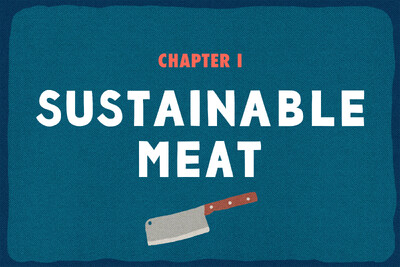When it comes to eating more ethically, meat is considered public enemy number one. And for good reason: Cow herds are the single largest emitter of greenhouse gases. Rain forests are slashed in order to make land for grazing. Pesticides are driving species extinction in the wild. When we combine the pastures used for grazing and the land to grow their feed, nearly 80% of the world’s agricultural land is used for livestock—but they produce just 18% of food calories consumed worldwide and 37% of protein. Deforestation, agriculture, and other land-use changes contribute 40% of the world’s greenhouse gases.
The takeaway ✍️ : Meat consumption has become the biggest cause of climate change. (And FYI, April 2022 set the record for the highest CO2 levels in human history.)
So, is this where we command you to swap your T-bone for tofu? Nope. As Alicia wrote in her email, this series is about giving you options, not rules. If you want to eat animal protein, we’re here to help you find the most healthy and environmentally friendly ways to do just that. So, let’s dive in…

If you’re going to eat meat, make it sustainable.
But what exactly, you might ask, is “sustainable meat”? While there’s no real litmus test (at least, not yet), it’s generally defined as meat that comes from cows raised via low-impact or regenerative practices and not on industrial farms.
Industrial farms = 👎
On industrial farms, monocrops (when one crop like corn or soy is grown on the same land year after year) are harvested to feed the animals en masse. This leads to recurring plowing, which in turn loosens the soil, disturbing the natural bacteria and fungi that keep it nutrient-rich. More pesticides are needed because monocrops easily attract insects. And most crucially, due to reduced soil sequestration (the ability to retain gases), more carbon dioxide is released into the atmosphere.
Regenerative farms = 👍
Regenerative farming practices minimize harm to the environment by using fewer resources and lowering carbon emissions. In fact, a Rodale Institute study suggests we can sequester more than 100% of current annual carbon dioxide emissions by switching to regenerative farming practices like holistic grazing, crop rotation, and the use of cover crops.
REGENERATIVE FARMING TERMS TO KNOW 🚜
Holistic grazing
Moving animals from one area to another to feed from, and fertilize plants. This supports plant life diversity and therefore a more sustainable ecosystem.
Crop rotation
Planting different crops in the same area, which naturally returns nutrients to the earth and interrupts pest and disease cycles.
Cover crops
Types of plants that cover the soil but are not harvested. Cover crops enrich the soil and smother weeds, lessening the need for pesticides.
As you can see, the conditions surrounding feeding animals (and therefore, the sustainability of our meat) begin from the soil. Buying meat from farms that feed cows holistically is a good way to promote small businesses that prioritize the integrity of ecosystems.
And it’s not just about the health of the land…
Animals raised on regenerative farms undergo less stress, which means they tend to be healthier. “Organically grown meats are often higher in omega-3 fatty acids and phytonutrients,” says Emahlea Jackson, a dietitian, epidemiologist, and adjunct professor at Seattle Pacific University. Additionally, they lack the antibiotics and hormones given to animals on industrial farms. So it’s fair to say that sustainable meat is better for the humans who eat it, too.

Learn to decode meat labels.
Reading labels is a good way to get more mindful about your meat consumption, but the demand for better meat with less impact on the environment has led to some misleading labels. Here’s our working checklist to help decipher the jargon.
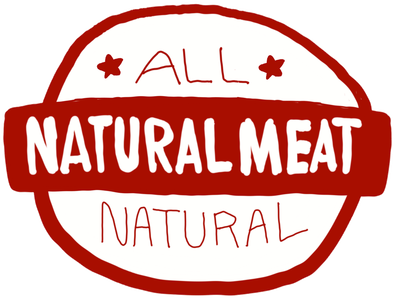
All-natural
What it might lead you to believe...
Product contains no artificial ingredients or added color and is only minimally processed.
What it really means...
Chemicals can still be added. Also, fundamentally, our food system isn’t all-natural to begin with.
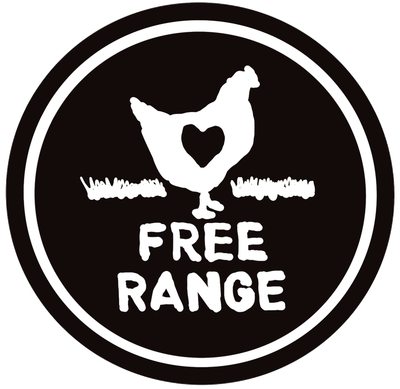
Free-range
What it might lead you to believe...
The animals were able to range freely outdoors.
What it really means...
This isn’t verified through on-farm inspections and can be used as long as animals were given some access to an outdoor area of unspecified size.

Humanely raised
What it might lead you to believe...
The animals were raised in a humane way.
What it really means...
Since the USDA doesn’t define “humanely raised,” it’s up to the producer to define this, resulting in a conflict of interest.
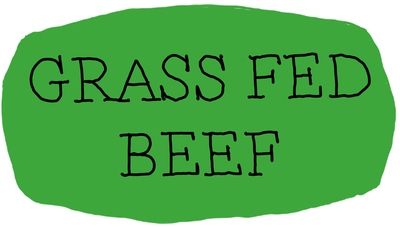
Grass-fed
What it might lead you to believe...
The cows were fed with grass, not grain, in a wide pasture.
What it really means...
The focus on what the cows were fed leaves out basic living conditions such as confinement and use of hormones/antibiotics. Also, some companies have been grandfathered in to use this label without updated inspections.
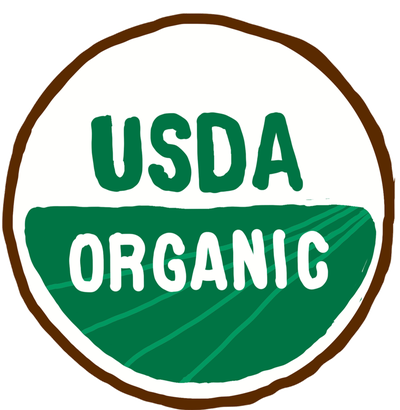
Organic
What it might lead you to believe...
The animals were born and raised on pastures labeled organic. No antibiotics were used on the animals and no chemicals were used in growing their feed.
What it really means...
This is a tricky one. It forbids the use of ingredients detailed in The National List of Allowed and Prohibited Substances, so it does guarantee that farm workers aren’t exposed to chemicals (but it doesn’t guarantee other worker protections like higher wages, even though you’re paying more at the store). It gets murkier from there. A product only needs to be 95% organic to use the label, and animals may still receive injections of foreign substances. And, lastly, depending on where the product is from, it might have a bigger carbon footprint than local food given the impact of shipping. Though organic labeling still holds some credibility, it’s not the highest bar.

Know the labels you can trust.
You might be in a label spiral, but fear not! There are two NGO-awarded certifications considered to be the gold standard, and that require ranchers to meet rigorous standards in order to use them.
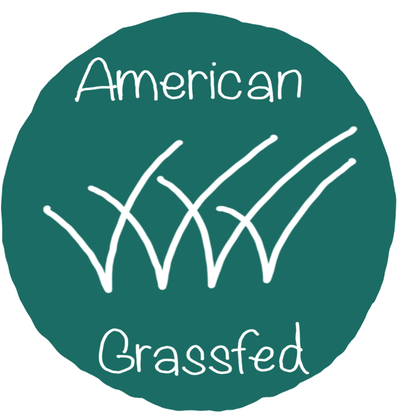
American Grassfed Association Certified🏅
When the USDA introduced its own definition of “grass-fed” (mentioned above), the AGA decided to stick with its more stringent standards, which mandate animals are:
1. Fed a lifetime diet of 100% forage (meaning all their food comes from grazing).
2. Raised on pasture, not in confinement.
3. Never treated with added hormones or antibiotics.
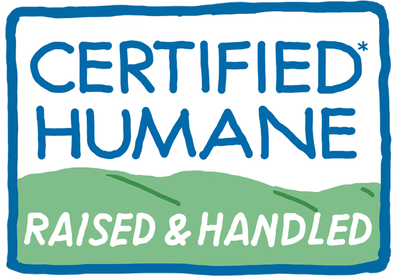
Certified Humane🏅
Humane Farm Animal Care regulates products earning this label, which guarantees:
1. Farmers are held to strict handling standards.
2. Animals are free to perform natural activities and are fed quality feed free of antibiotics, hormones, and animal by-products.

Don’t forget about chicken.
After all, we’re eating more of it than ever.
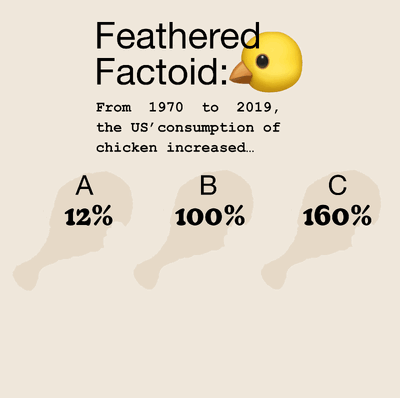
When it comes to sustainability issues, mass-produced poultry shouldn’t fly under the radar. Chicken farming is heavily industrialized, resulting in outsized amounts of farmland dedicated to growing their feed. Many experts, including Gidon Eschel, professor of environmental physics at Bard College, say this large-scale agriculture causes pollution from fertilizers and pesticides, soil changes, and drinking water contamination, and ultimately contributes to climate change.
What’s an ethical wing-lover to do? Conscientiously raised chickens can be sold under the previously mentioned Certified Humane label. You can also look for the Animal Welfare Certified Food label.
When it comes to eggs, know the difference between cage-free, free-range, and pasture-raised: In the first two, the hens have less than one square foot and two square feet, respectively, to live on and are fed a corn- and soy-based diet—which, again, supports monocrops that deteriorate soil quality and cause chemicals to flow into our water supply. Pasture-raised hens have 108 square feet each to roam on and consume feed, grass, bugs, worms, and anything else in the dirt. They are let out of the barns in the morning and called back in before nighttime. If you have trouble remembering the next time you’re at the grocery store, here’s a little rhyme for you: Pasture-raised aren’t overgrazed.

#MeatlessMondays (or any day) do make a difference.
Meats are rich in protein, which is essential for our health. But the average person gets more animal protein than they need. “Most people need about 0.8 grams of protein per kilogram of body weight per day. In reality, though, most people will eat about 10 ounces of meat per day on average—that is, two times the recommended maximum,” says Jackson. And this can have significant health repercussions. As Alicia pointed out in her letter, a diet abundant in red meat can increase your risk of everything from heart disease to diabetes.
Meanwhile, if everyone reduced their consumption of beef, pork, and poultry by a quarter and replaced them with plant proteins, greenhouse emissions would be reduced by 82 million metric tons (a little more than 1%), and it would also free up 23 million acres of farmland.
So the next time you’re planning meals for the week, consider sizing down your meat portions or increasing the number of plant-based dishes. Not sure where to start? Don’t worry, next week’s newsletter will turn you into a veggie-cooking pro.

If you can, source your meat from your local butcher shop—you’ll be supporting a small business in your neighborhood. Ask these questions to dig into how the meat behind the counter got there.
Q: Where do you source your animals from?
Get clarity on the farms your meat comes from and whether they use regenerative practices. Bonus points if they are local since shipping and packaging come with their own carbon footprints.
Q: What are some uncommon but flavorful cuts you have available?
You can reduce waste by going for less-requested cuts that won’t decrease the quality of your meal.
Q: Do you make your own sausages, burger patties, and other processed meats?
Sometimes forced, or processed, meats are sourced elsewhere, so it’s a good idea to find out if they’re raised to the same standards as the other cuts.
Further reading:
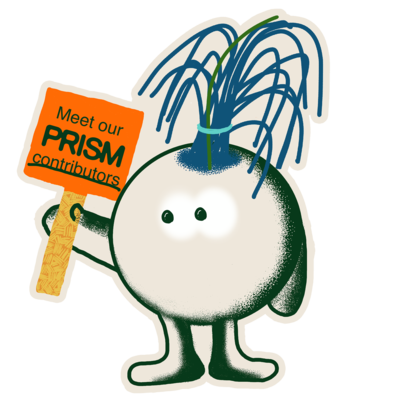
Esther Tseng
Esther is a food and culture writer based in Los Angeles. Her work has appeared in The New York Times, The Los Angeles Times, Bon Appétit, Food & Wine, and more.
If you had unlimited funds to spend on a meal, where would you go (and what would you order)?
If I had unlimited funds to spend on a meal, I would travel to Japan for an omakase meal of sushi paired with sake (admittedly not very sustainable).

Prism Postcards takes the cringe out of wellness. It’s smart, inclusive, and funny. Sign up and get it delivered to your inbox every other week.
